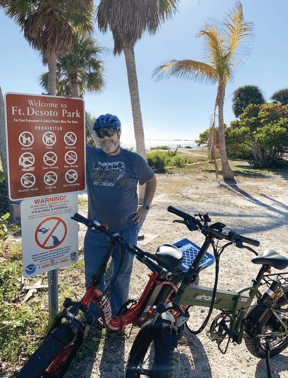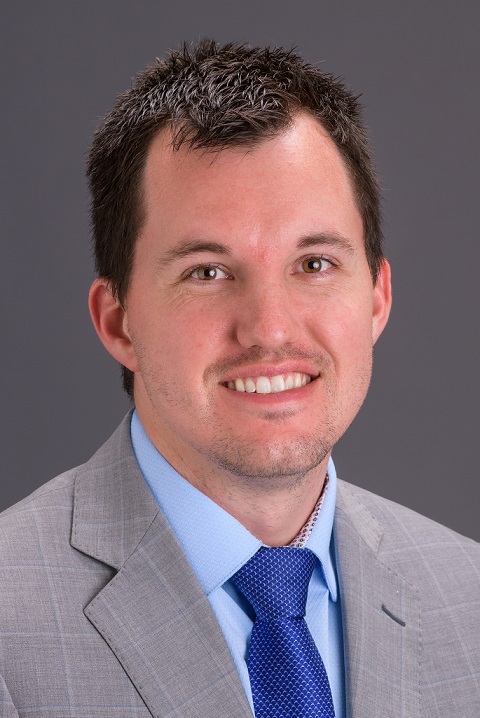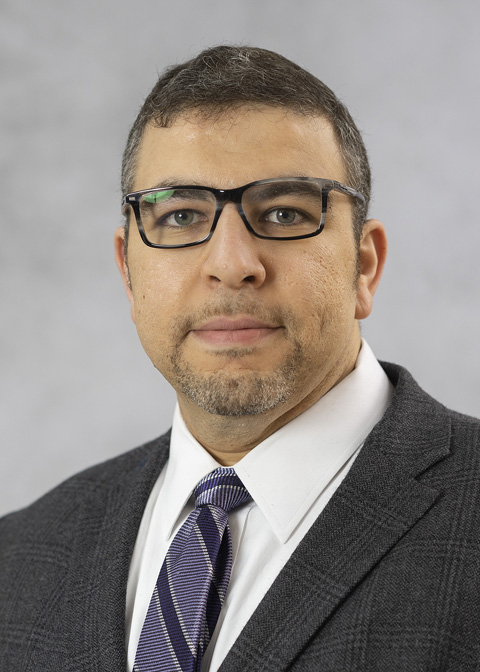“We decided we should enjoy life. We’re lucky enough that we can.”

Bolmar Carrasquilla had a dry cough that wouldn’t quit. The 60-year-old now-retired information technology manager didn’t think much of the constant tickle in his throat in the first weeks of 2020. “I thought I wasn’t drinking enough water,” he says.
But the cough didn’t go away after a round of antibiotics, so he saw an ear, nose and throat (ENT) specialist and got a CAT (computed axial tomography) scan.
“Then COVID-19 hit,” Bolmar says. It was July or August before he followed up on his ENT’s advice and took his CAT scan to Robert Wood Johnson University Hospital (RWJUH). Bolmar understood from his ENT that his tonsils were inflamed. He didn’t yet realize the issue was more serious than that.
Concerning Growth
Bolmar’s first hint he had a worrisome problem came during his nasal endoscopy in which a small camera was inserted through the nose to obtain views of the throat, tonsils and voice box.

Craig Bollig, MD, a fellowship-trained head and neck surgical oncologist and microvascular reconstructive surgeon, was called in to take a look. One tonsil was markedly enlarged and inflamed. “It was concerning for potential cancer,” Dr. Bollig says.
He turned to Bolmar. “Can you come in tomorrow for a biopsy?” he asked.
“I got really scared because of the urgency,” Bolmar says.
The biopsy came back negative, but Dr. Bollig wasn’t reassured. “We’re seeing an epidemic of throat cancers related to human papillomavirus, or HPV, especially in men,” Dr. Bollig says. “These viral cancers are often deep, small tumors that don’t produce symptoms more alarming than a lump in the neck or tickle in the throat.”
Surface biopsy samples sometimes don’t catch the cancer. “His mass was concerning enough that it needed to be removed,” Dr. Bollig says.
“He explained the whole procedure,” Bolmar says. “They would take out the tonsil and examine it, and if cancer was inside, they’d take out lymph nodes nearby to make sure nothing spread.”
Advanced Robotics
RWJUH had just refitted the surgical suite with the Intuitive daVinci SP robot, which features a single-port robotic surgical system specially designed to handle throat cases like his along with other procedures such as urologic surgeries. Bolmar would be the first to benefit from it for throat cancer.

“The daVinci SP robotic surgical system allows hand motions of a surgeon sitting at a console to be translated to miniaturized robot arms able to fit into spaces where hands would not,” says Sammy Elsamra, MD, Director of the Robotic Surgical Program at RWJUH. “It has a camera that provides 3D visualization and 10 times magnification, and it’s able to perform more precise separation of tissues as well as reconstruction.”
Earlier robotic systems featured multiport access to the body. The new system’s single port means surgeons can do minimally invasive procedures deep in the throat through the narrow confines of the mouth.
“The traditional approach to the back of the throat may have involved actually breaking the jawbone and could result in a significantly longer hospital stay,” Dr. Bollig says. “This system is available only in a few select centers nationally, and we are one of the first institutions in our area to offer it.”
Robotic surgery isn’t necessarily appropriate for all cases, Dr. Bollig says.
“Some people are better treated with radiation or other approaches,” he says. “We discuss cases in a multidisciplinary tumor board that includes oncologists, radiologists and surgeons so we can come up with the best treatment plan for each patient.”
Dr. Elsamra says the system can be used for multiple procedures in his specialty, urology, including removing the prostate gland and repairing the tube between the bladder and kidney. It can also be used for a variety of other types of surgery.
“Having a dedicated robotic surgery program signifies not only that we have the latest technology and equipment, but we also have the expertise to use it,” he says. “Our surgeons are fellowship-trained and have vast experience with robotic surgical systems. Many are active in lecturing on robotic surgery nationally.”
New Chance at Life
During Bolmar’s surgery, his tonsil was indeed found to have cancer. Surgeons removed lymph nodes and tissue through an incision in his neck, but later tests showed the cancer fortunately hadn’t spread.
Bolmar was amazed how quickly he healed and how little pain medication he needed. He also marveled at how his neck incision was sealed without external stitches and hidden in natural folds of skin. “It was six inches, but you can barely see it,” he says. “It was an amazing cut.”
In the aftermath of surgery and COVID, he and his wife rethought life. They retired early and moved from Old Bridge to St. Petersburg, FL. “We decided we should enjoy life,” he says. “We’re lucky enough that we can.”
Learn more about robotic surgery at Robert Wood Johnson University Hospital.